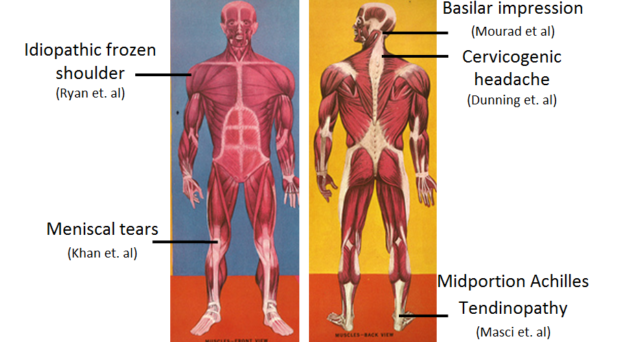
Basilar impression presenting as intermittent mechanical neck pain: a rare case report (Mourad et. al)
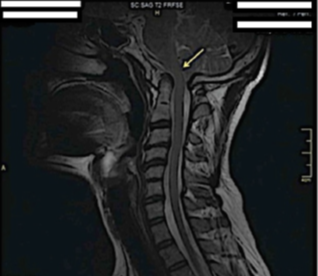
As one of the most common musculoskeletal disorders in clinical practice, neck pain is a common topic in BMC Musculoskeletal Disorders. However, this case report by Mourad and colleagues describes a patient presenting with neck pain, occipital headache and dizziness, which diagnostic imaging revealed to be caused by a basilar impression (an upward displacement of vertebral elements into the foramen magnum as a result of bone softening) rather than a musculoskeletal cause. Although fairly uncommon it can be dangerous as congenital basilar impression often remains asymptomatic and undiagnosed into adulthood. When symptomatic, neck pain is one of its most ubiquitous symptoms occurring in 59% of patients. This case report highlights the importance of considering non-musculoskeletal, rare pathologic disorders such as basilar impression within the screening and differential diagnosis of neck pain. It also demonstrates the capability of physiotherapists to screen for pathologic medical conditions and identify when patient’s symptoms are beyond the scope of physiotherapy.
Upper cervical and upper thoracic manipulation versus mobilization and exercise in patients with cervicogenic headache: a multi-center randomized clinical trial (Dunning et. al )
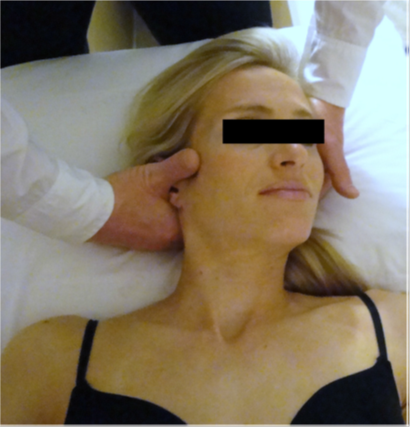
In January, Dunning and colleagues published the first randomized control trial which compared the effectiveness of manipulation versus mobilization paired with cranio-cervical flexion exercise in ameliorating symptoms in patients with cervicogenic headache (headaches arising from musculoskeletal dysfunctions in the cervical spine). The study investigated the issue of best practice in the treatment of these headaches, which has been contentious due to the potential risks associated with manipulation.
The findings demonstrated that manipulation produced significantly greater reductions in headache intensity, frequency and duration as well as reductions in disability and medication intake when compared with mobilization and exercise. The study provides a baseline for treatment of cervicogenic headache, which suggests manipulation as the more efficacious in terms of symptom reduction, and also indicates the need for further research to determine the relative effectiveness of different types and dosages of manipulation.
The pathophysiology associated with primary (idiopathic) frozen shoulder: A systematic review (Ryan et. al)
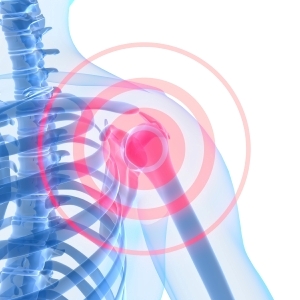 As a common, but poorly understood, musculoskeletal disorder, understanding the pathology and disease progression in primary frozen shoulder is critical to inform effective management. This systematic review synthesized evidence from 13 observational studies (417 shoulders) on intra- and peri-articular pathophysiologic changes seen in patients affected by primary frozen shoulder. The findings highlight that the anterior shoulder structures are the areas of greatest pathologic change in this condition. However, the study also identified that a lack of evidence with a low risk of bias, non-standardized inclusion criteria and poorly reported study characteristics preclude the production of comparable results and therefore a greater understanding of the pathophysiology of primary frozen shoulder. Ryan and colleagues suggest that a consensus regarding inclusion criteria is required before future studies can investigate tissue changes at defined stages to better understand the disease continuum and inform stage-specific management of this condition.
As a common, but poorly understood, musculoskeletal disorder, understanding the pathology and disease progression in primary frozen shoulder is critical to inform effective management. This systematic review synthesized evidence from 13 observational studies (417 shoulders) on intra- and peri-articular pathophysiologic changes seen in patients affected by primary frozen shoulder. The findings highlight that the anterior shoulder structures are the areas of greatest pathologic change in this condition. However, the study also identified that a lack of evidence with a low risk of bias, non-standardized inclusion criteria and poorly reported study characteristics preclude the production of comparable results and therefore a greater understanding of the pathophysiology of primary frozen shoulder. Ryan and colleagues suggest that a consensus regarding inclusion criteria is required before future studies can investigate tissue changes at defined stages to better understand the disease continuum and inform stage-specific management of this condition.
Natural history and clinical significance of meniscal tears over 8 years in a midlife cohort (Khan et. al )
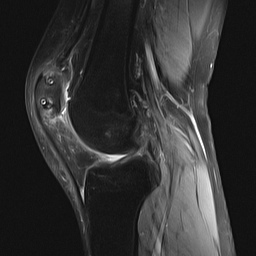
Khan et al. described the results of a longitudinal cohort study and provided the first independent longitudinal association between increasing severity of meniscal tears and worsening knee pain. It also validated previous studies by demonstrating the majority of meniscal tears (55/63) affected the medial meniscus, where the medial posterior site was the most prevalent tear location. Additionally, this study identified risk factors for tear worsening, including high BMI and osteophytes at first visit, which provides a baseline for recognizing patients where tears are likely to increase in severity. Significantly, this study showed that 16% of tears consistently increased in severity over the 8 year follow-up period, highlighting the importance of early effective management.
How to diagnose plantaris tendon involvement in midportion Achilles tendinopathy – clinical and imaging findings (Masci et. al )
Previous studies have shown that patients with medially located tendon pain and a thickened plantaris close the medial Achilles tendon were often unresponsive to standard scraping treatment. Masci and colleagues demonstrated the effective use of a novel imaging technique [Ultrasound Tissue Characterization (UTC)] to diagnose involvement of the plantaris tendon in patients with midportion Achilles tendinopathy. The UTC algorithms allow quantification of the tendon integrity by categorizing grey scale changes into 4 different echo-types related to matrix integrity. These are then characterized on a scale from intact to completely disorganized. This is visualized in the figure below from the publication, which shows focal disorganized echopixels medially (in images A and B), while image C shows the less frequent observation of general disorganized echopixels in both medial and lateral parts.
Although ultrasound and color Doppler indicated plantaris tendon involvement in 20/23 cases, UTC revealed disorganized changes in the medial Achilles midportion in all patients. These changes may indirectly indicate involvement of the plantaris tendon due to its compression on the medial aspect of the Achilles tendon. This study demonstrated the effective utilization of a novel technology (UTC) and addressed the need to diagnose plantaris tendon involvement to inform future clinical management of patients with midportion Achilles tendinopathy.

Comments